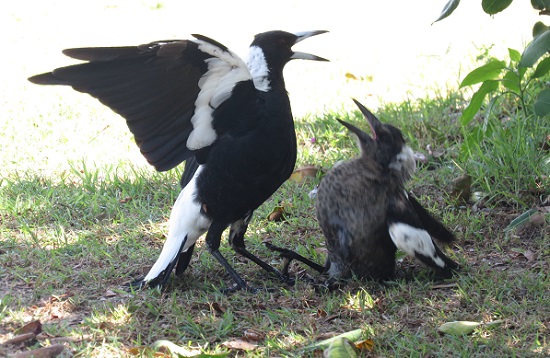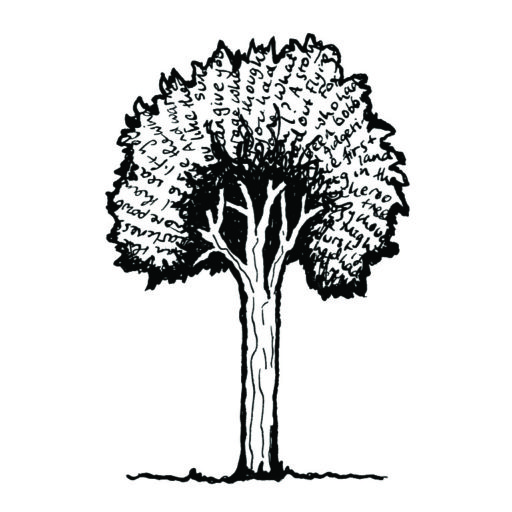
If they were primates, we’d say they ‘had culture’ ‘were intelligent’ and ‘had complex cognitive abilities’. But as birds, these qualities are largely overlooked. And, what’s more, they are Australian birds. Australia, the arse-end of anywhere, that odd country of beer-drinkers and surfboard-riders, dusty outback roads, and an all-consuming obsession with sport. The last place you’d expect to find signs of superior intelligence (just look at our democratically-elected leaders!). Or is it?
Gisela Kaplan has given the bird-lovers of Australia (of which there are many) a great gift in her recent book ‘Bird Minds: Cognition and Behaviour of Australian Native Birds’. It describes how decades of research and observation has revealed signs of intelligence and emotion in Australian birds that until fairly recently were dismissed as being exclusively the domain of humans (and perhaps some other primates). This book will make you re-think what’s really behind some of the bird behaviours you see every day. It also opens up new possibilities for interpreting the ecology and evolution of the wider Australian biota. It’s hard to say which parts of this book I like the most, as there are many moments of delight and wonder.
The Australian magpie emerges as one of the smartest birds (but bear in mind it’s also one of the most well-studied. More bird brilliance is likely to be discovered if we look at other species in more detail). Magpies are superb mimics, cache their food, engage in play behaviour, often breed cooperatively, and use pointing to alert other magpies to the presence and whereabouts of predators. Such pointing behaviour was once thought to be only performed by humans and the great apes, and it suggests that one magpie can read the mind of another.

Magpies playing at Woody Head, New South Wales.



Other Australian corvids are also very smart. Kaplan recounts the tale of a hand-reared currawong that returned after a period of absence and remembered where a choice treat of grapes was hidden. Certainly the grey currawongs would only turn up in our suburban yard in Port Lincoln briefly each year when the Brachychiton tree had ripe seeds. They remembered the place and time when those seeds would appear.
Here’s a brief video I recently took of a pied currawong that was extracting seeds out of kurrajong fruit (Brachychiton populneus) at Weddin Mountains National Park, NSW:
[kad_youtube url=”https://youtu.be/QSBrJVvrQU4″ ]
I’ve seen those tricky crows in New Caledonia that make and use their own tools to extract insects, and who caused a sensation when they were ‘discovered’ some years ago. Before this, the use of tools was thought to be a defining sign of primate intelligence. But did you know that at least 11 Australian birds also use tools? These include the Palm Cockatoo, Crested shrike-tit and Lewin’s honeyeater, and the black kite which drops flaming branches to drive out (and perhaps barbecue) its prey.
Many Australian birds live longer, and have more lasting pair-bonds, than birds elsewhere. For example, Sulphur-crested cockatoos can live for over 100 years, and they form a life-long partnership with their mate. We have a trio of Sulphur-crested cockies that frequent our neighbourhood. Always three, and most probably always the same three. A friend of mine calls them all ‘Frank’, but maybe it should be Frank, Francine and little baby Frances who has been living with mum and dad for the past 30 years?
Imagine if those birds have been living in Sandgate for 50 or 60 years, let alone 100? What changes have they seen, how many human residents have come and gone? No wonder they look at me so calmly and contemplatively as I walk past with my dogs. They often forage on the ground, in the grassy, unkempt front yard at the corner of the street, but are seldom bothered to fly away, or even fly up to a higher perch as we walk past. They eye the low wire fence that separates human and dogs from cockatoos, and slowly and deliberately keep eating. They’ve got it all worked out, and probably even recognize me as the same, mostly harmless person they’ve been seeing for the last 9 years I’ve lived here.
Australia is also a hotspot for cooperative behaviour in birds, with a whopping 51% of bird species of the old Australian lineages being cooperative breeders, including fairy-wrens, babblers, choughs, apostlebirds, sitellas and woodswallows. This is significant because competition has often been emphasized in studies of nature, and is thought to be a major (the major?) driver of evolution. But the significance of cooperation may have been overlooked. Cooperative breeding generally means that a number of non-breeding birds assist the breeding pair with the raising of chicks. Perhaps this is a useful strategy when food is scarce, and has enabled some Australian bird species to survive the highly variable ‘boom and bust’ periods that characterize much of the Australian landscape.

“Have you been sleeping with my wife?” Although fairy-wrens breed cooperatively, the subordinate male helpers (left) are also notorious for sneakily copulating with the dominant female bird, when the dominant male (right) isn’t looking.
The construction of bowers by bowerbirds requires excellent memory and a sense of proportion, colour and tool use. Male bowerbirds carefully select objects to use as decorations, and notice the slightest change in their bower, such as the disappearance of a single item, or an altered order of pebble size. Kaplan writes: “If they were primates, we would call it culture and consider the artefacts to be of highly symbolic value”.
But perhaps the most gripping part of the book, for me, was the evidence of emotion in birds. The accepted emotions of birds started out including fear, aggression, sex and hunger, in the 1950’s, but in the 2000’s was expanded to include cooperation, jealousy and deception, and recently has come to embrace joy, love, grief and a sense of humour. Only in the 1980’s did scientists suspect that birds experienced suffering and pain! You’ll have to read the book to examine the science, but it left me feeling strangely vindicated, while also deeply saddened. It’s one thing to abstractedly know that a range of human activities (such as vegetation clearing) threaten the survival of our native birds. But it’s quite another to imagine the real suffering and grief that are probably experienced by birds when they witness bulldozers flattening their bush home.
‘Bird Minds’ is written in a careful, detailed and fairly technical style, although Kaplan also includes many anecdotal stories from her own rich experience of caring for orphaned and injured birds. It is ‘science for the general public’ but perhaps more ‘sciency’ than many other books in this genre. Experiments are explained in some detail, and many references are provided, to enable the reader to investigate further. This may put some non-technical readers off, but it is certainly worth persevering with this book, as the rewards are great.
Has the unique environment and evolution of the Australian landscape resulted in its birds being brighter than those of the northern hemisphere? Kaplan leaves us with this tantalising question, which will hopefully inspire future generations of researchers and bird-watchers to find out more.
Discover more from Paperbark Writer
Subscribe to get the latest posts sent to your email.

I’ve been noticing great reviews of this book and am looking forward to reading it myself. After watching some remarkable behaviour in birds (especially crows and cockatoos) over the years I’ve no doubt we’ve under-estimated their intelligence. It’s a fascinating topic! Thanks for sharing your views on the book and also your own observations, thoughts and great photographs about the topic. 🙂
Hey Jane thanks for reading and commenting. I’m sure you’re going to enjoy equating your observations with what’s contained in this book. And I’m looking forward to hearing what you make of it. Cheers, Paula
The magpies are a riot.
Yes aren’t they fabulous? We were just sitting quietly – doing some sketching actually – and these guys were just wrestling around, not far away.
Thanks for an excellent precise of this book Paula. Like you, I feel my observations and intuition is validated by this wonderful book. It does sound a bit ‘techy’ so I’m grateful for your review of it.
This week a butcher bird landed on a cane chair on our patio carrying a small dead lizard in its beak. I watched as it wedged the lizard into a crook between two pieces of cane. That was two days ago. The lizard is still there, ‘curing’. I expect the butcher bird will return. I’ve seen them do this before. In the meantime, I’m not using that chair. For the moment, it’s the butcher bird’s larder
Hey Gail what a great – if grisly – thing to watch, having the local butcherbird use your patio chair as a larder! Apparently lots of Australian birds cache food, but it’s far less celebrated then for some northern hemisphere birds. My dog often finds little bits of bread, bone, etc, at the base of a tree outside our front gate, and I suspect the magpies use that as a cache. Thanks for reading and commenting